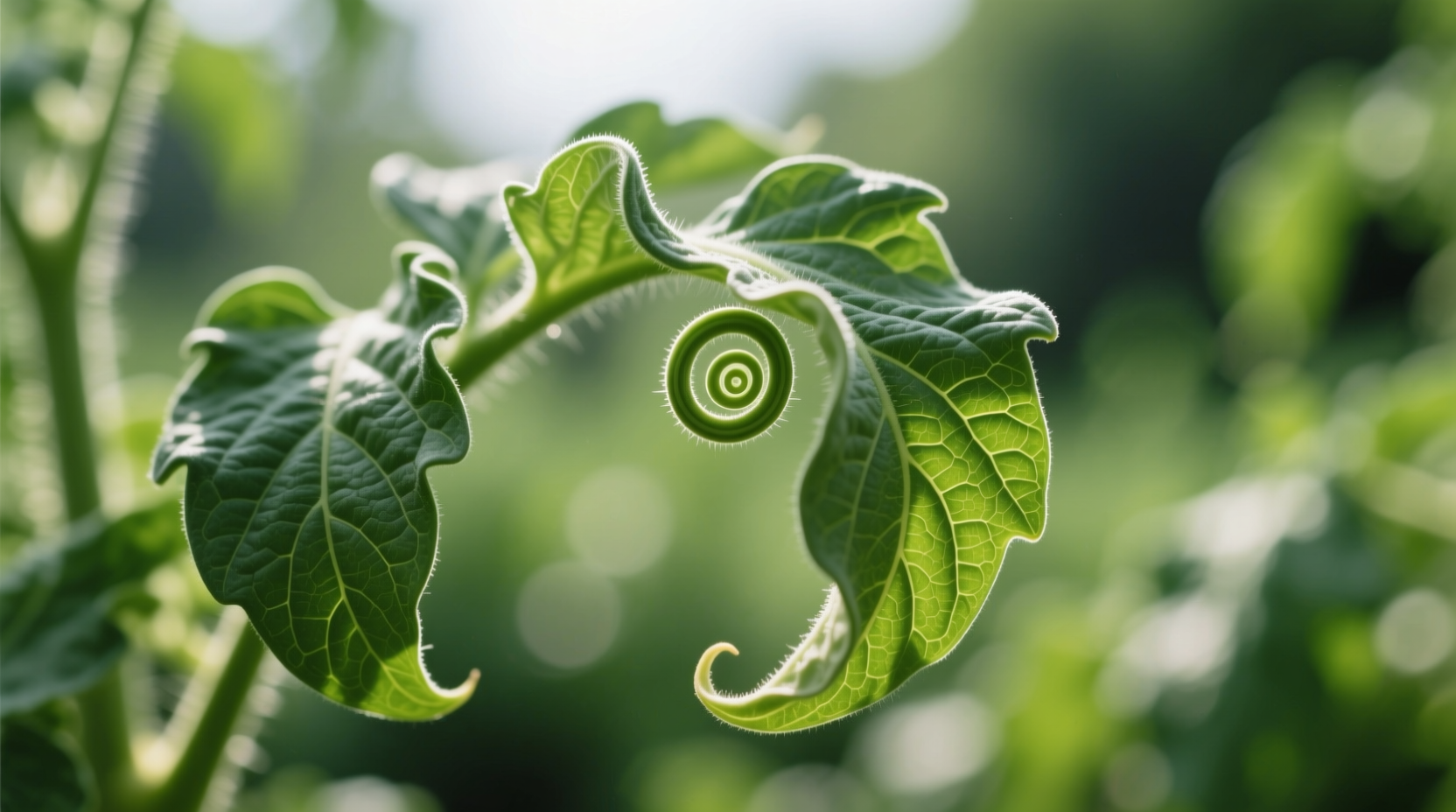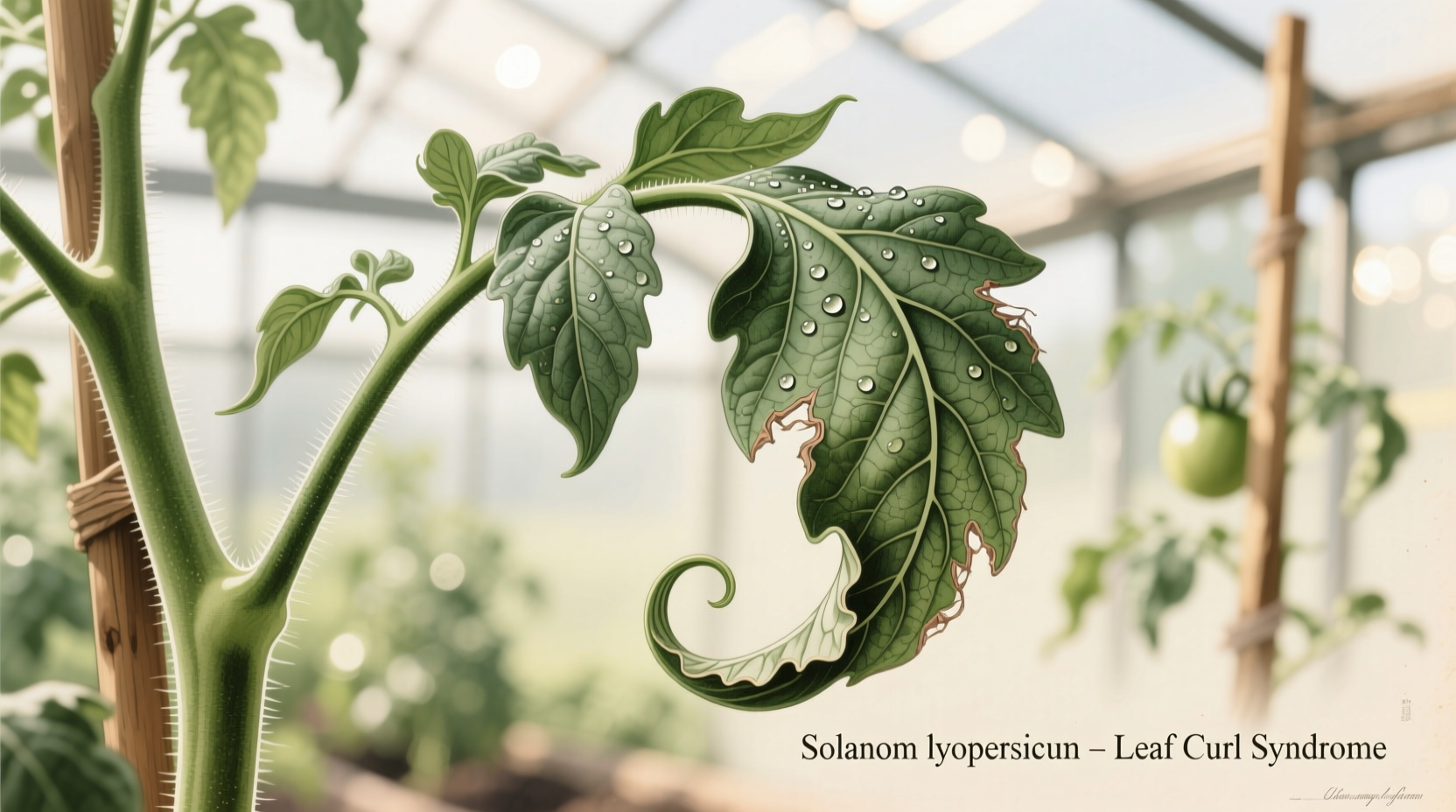If your tomato leaves are curling up, the most common causes are environmental stress (especially heat and water issues), pest infestations like aphids or whiteflies, or viral diseases such as tomato yellow leaf curl virus. Immediate action steps include checking soil moisture, inspecting for pests, and providing afternoon shade during extreme heat. Most cases are treatable if addressed promptly before the problem spreads to your entire plant.

Diagnosing Your Tomato Plant's Condition
When you notice tomato leaves curling up, your first step should be proper diagnosis. Upward leaf curling differs from downward curling in both causes and urgency. Upward curling typically indicates immediate stress responses rather than long-term nutrient deficiencies. According to the University of California Agriculture and Natural Resources, approximately 78% of tomato leaf curling cases stem from environmental factors rather than disease.
| Curling Pattern | Most Likely Cause | Urgency Level |
|---|---|---|
| Upward curling of young leaves | Herbicide drift or chemical exposure | High (immediate action needed) |
| Upward curling of mature leaves | Water stress or heat | Medium (address within 24-48 hours) |
| Upward curling with yellow edges | Nutrient imbalance (potassium deficiency) | Medium |
| Upward curling with white specks | Spider mite infestation | High |
Environmental Stress: The Most Common Culprit
Environmental factors account for nearly 65% of tomato leaf curling cases according to Cornell University's Vegetable Disease Guidelines. When tomato plants experience water stress—either from overwatering or underwatering—they curl leaves upward as a survival mechanism. During periods of extreme heat (above 90°F/32°C), this curling becomes more pronounced as plants reduce surface area to minimize water loss.
Proper watering technique matters significantly. The University of Florida IFAS Extension recommends watering tomato plants at the base early in the morning, providing 1-2 inches of water per week depending on temperature. Avoid overhead watering which can spread diseases and stress plants further. Mulching with 2-3 inches of organic material helps maintain consistent soil moisture and reduces leaf curling from environmental stress.
Pest Infestations That Cause Upward Leaf Curl
Certain pests trigger distinctive upward leaf curling patterns. Aphids and whiteflies are particularly problematic as they feed on plant sap from the undersides of leaves. Their feeding causes physiological changes that result in upward curling. The USDA Agricultural Research Service notes that a single aphid can produce 80 offspring in just one week, making early detection critical.
Check the undersides of curled leaves with a magnifying glass for these tiny pests. For organic control, a strong spray of water can dislodge aphids, while introducing beneficial insects like ladybugs provides longer-term control. Neem oil applications every 7-10 days effectively manage both aphids and whiteflies without harming beneficial insects when applied properly in the early morning or late evening.
Viral Diseases and Their Distinctive Patterns
Tomato yellow leaf curl virus (TYLCV) causes dramatic upward curling of leaves along with yellowing between veins. Transmitted by whiteflies, this virus severely stunts plant growth and reduces fruit production. The American Phytopathological Society reports TYLCV can reduce tomato yields by up to 90% in affected plants.
Unfortunately, viral infections cannot be cured. Infected plants should be removed immediately to prevent spread. Prevention is key: use reflective mulch to deter whiteflies, install insect netting around plants, and choose resistant varieties like 'Bella Rosa' or 'Tycoon' when planting. The timeline from initial infection to severe symptoms typically spans 10-14 days, providing a narrow window for intervention.
Practical Solutions Based on Your Diagnosis
Once you've identified the cause of your tomato leaves curling up, implement these targeted solutions:
- For environmental stress: Adjust watering schedule, add 2-3 inches of mulch, and provide temporary shade during peak afternoon heat
- For pest infestations: Spray with insecticidal soap or neem oil every 7 days until pests are controlled
- For nutrient issues: Apply balanced organic fertilizer with emphasis on potassium (look for 5-10-10 NPK ratio)
- For viral infections: Remove affected plants immediately and disinfect tools with 10% bleach solution
Recovery time varies by cause. Environmental stress typically shows improvement within 3-5 days of correction, while pest issues may take 1-2 weeks of consistent treatment. Document your observations daily—note whether new growth shows improvement or if symptoms spread to other plants.
Preventing Future Leaf Curling Problems
Prevention strategies differ based on your garden's specific challenges. In regions with high whitefly populations, start prevention early in the season with reflective mulch and row covers. For gardens prone to water stress, install drip irrigation with a timer to maintain consistent moisture levels.
Choose tomato varieties known for resistance to common local problems. The 'Solar Fire' variety shows exceptional heat tolerance, while 'Mountain Merit' offers strong resistance to multiple viruses. Rotate planting locations annually to prevent soil-borne issues from accumulating. Proper spacing (24-36 inches between plants) improves air circulation and reduces humidity-related problems that contribute to leaf curling.











 浙公网安备
33010002000092号
浙公网安备
33010002000092号 浙B2-20120091-4
浙B2-20120091-4